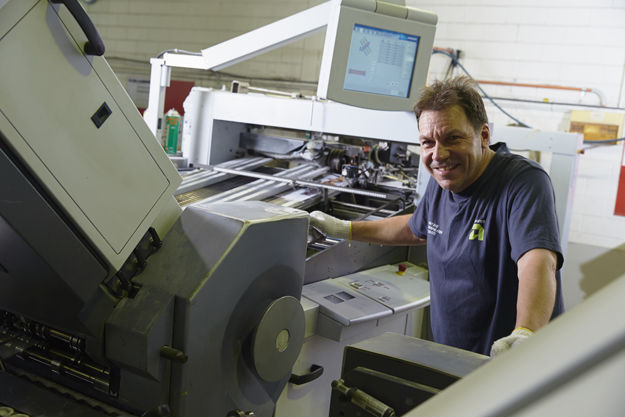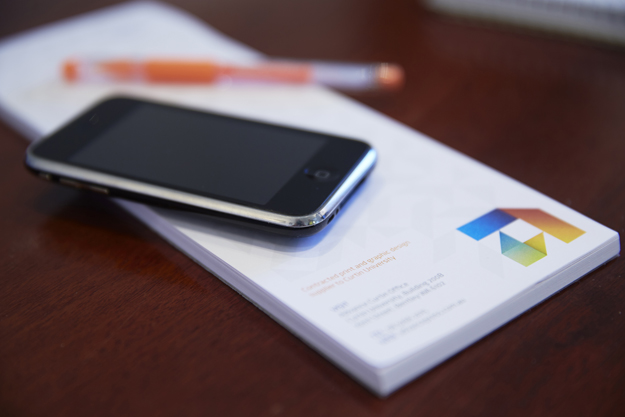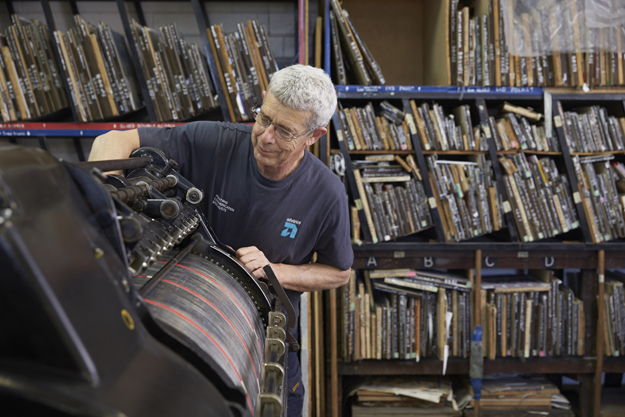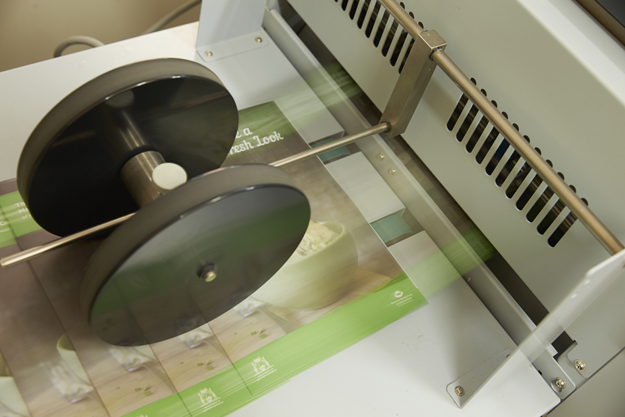online order access
request for quote
For further information please contact us on 9376 4000 or fill in our online form.
Specification Guide - File Information
- Provide a hard copy printed proof of the document to be produced.
- Supply documents as single pages in sequential order in a single PDF.
- Covers with spines are to be supplied as a single page pdf inclusive of front cover, back cover and spine width. Refer to your quote or contact your account manager for the correct spine width.
- View bounding box of PDFs in Acrobat with crop tool – check crop, trim and bleed area.
- Be aware of hairline strokes. Use nothing less than 0.25pt for 100% tint line, or 0.5pt for a percentage of a single colour line.
- Panel sizes on roll-fold documents must be set up correctly. Refer to our quote or contact your account manager for correct panel sizes.
- Ensure fonts are embedded or converted to outlines in PDFs.
- Make the bleed amount 3mm. Internal information should be kept 5mm inside the trim area. Allow 5mm bleed for covers.
- All images must be CMYK (not RGB) with a resolution of 300dpi. Mono raster images should be a minimum 1200dpi.
- Determine that no more than 310% ink limit is exceeded. To check the PDF, open the ‘Output Preview’ window in Acrobat and tick the ‘Total Area Coverage’ box, set the ink weight amount to 310%. The highlighted areas indicate if it is more than the predetermined amount.
Note: Advance Press is able to print a heavier weight but please talk to your account manager for more information.
- Blacks need to print dark rather than grey so create a ‘rich black’ process colour swatch of 100K 40C 40M 40Y. Rich black is best used for large areas of black, eg backgrounds, boxes, banners and text set at large sizes.
- Check how your artwork will separate for print using InDesign ‘Separations’ and Acrobat ‘Output Preview’ palettes.
- View the number of colours, spot colours and check rich blacks.
- Check that all black text is overprinting by toggling the black swatch on/off. Also check black text is 100% black and not made out of four colour process colours (CMYK).
- Check that the required spot colours separate correctly.
- Check that non-spot colours are set to process (CMYK).
- Use Pantone™ (PMS) names when adding spot colours. Avoid multiple version names of the same spot colour in your document. For example “Pantone 485 CVC” is seen as a different colour to “Pantone 485 CV”. If the PMS colour is used in an Illustrator logo, place this into the page layout program to create the swatch.
- Ensure that only the colour swatches that have been used in the document are included in the PDF.
- Set page size to the finished size of the printed item when trimmed.
- Forme-cut artwork will have the page size set to the outer most dimensions of the forme when flat.
- Check that the finished size is the same size indicated on our quote. If not, contact your account manager to update this information.
- Set forme cut-strokes to a spot colour 0.5pt in weight.
- Forme strokes and fi lls must be set to overprint.
- Forme can be included in the job, but also supply as a separate file.
- Set up varnishes and/or spot UV varnishes and embellishments as solid (100%) spot colours and they can be supplied as separate files.
Specification Guide - Media
- Supply files as a print industry PDF using job options.
- Advance conforms to ISO colour standards and prints within press and production tolerances so that desired colours are achieved.
PDF Creation
- Export from InDesign CS2 or later using ‘Advance Hi Res’ job options supplied as above.
- Alternatively use ‘High Quality Print’ job option adjusting the following settings only:
Marks and Bleeds:
-
-
- Add crop marks and page information only.
- Offset trim marks to 4mm. Ensure trim marks do not touch the image area.
- Do not use ‘Document Bleed Setting’.
- Set your bleed as ‘Custom’ to 3mm all around
-
Output:
Turn off all colour management.
Naming Conventions
- Files produced with forme cuts, varnishes or other embellishments, are to be set up to the chart supplied. This procedure maps the colour through our pre-press workflow so that the correct trapping is applied.
- Ensure the colour swatch is created as a spot colour with the breakdown in CMYK as shown in the table below.
| Description | Sample | Naming | Breakdown |
| Die Cut | Die Cut | 100M | |
| Satin varnish | Varnish | 40M 40Y | |
| UV varnish |  |
UV Varnish | 50C 50Y |
| Gloss varnish |  |
Gloss Varnish | 100M |
| Matt varnish |  |
Matt Varnish | 20M 30Y |
| Overprint black |  |
Overprint Black | 100K |
| Emboss |  |
Emboss | 50C 20K |
| Foil |  |
Foil | 100K |
| Fold line |  |
Fold line | 100K |
| Edge trim |  |
E T | 100K |
| Perforation |  |
Perf | 100M 100Y |
| Timed cut |  |
T Cut | 90C 10M 100Y 2K |
| Remoistenable glue, no ink, no varnish |  |
R Glue | 74M 74Y |
| Permanent glue, no ink, no varnish |  |
Perm Glue | 100C |
| Extracted waste |  |
E W | 3C 2M 31Y |
Proof Manager requires a specific fi le name suffix variable to recognise and process/render the PDF correctly.
| Document type | Suffix variable | File name example |
| CMYK | .C.pdf | filename.C.pdf |
| SPOT | .S.pdf | filename.S.pdf |
| METALLIC | .M.pdf | filename.M.pdf |
| B+W | .K.pdf | filename.K.pdf |
| VARNISH | .V.pdf | filename.V.pdf |
All document types are to be supplied as one complete PDF with pages in the page order OR as individual pages – see below (where “#” indicates page number).
| Document type | Suffix variable | File name example |
| CMYK | .C.pdf | filename.C.pg57.pdf |
| SPOT | .S.pdf | filename.S.pg57.pdf |
| METALLIC | .M.pdf | filename.M.pg57.pdf |
| B+W | .K.pdf | filename.K.pg57.pdf |
| VARNISH | .V.pdf | filename.V.pg57.pdf |
Document types to be supplied as single page PDFs.
If multiple impositions are necessary, the variable name will now have a fixed portion.
For example:
filename.Cover.C.pdf and filename.Text.C.pdf with filename.Cover.V.pdf and filename.Text.V.pdf.
Our clients can download the most common folder dielines below:
We can also source and supply alternative and custom-made dielines.
Please contact Advance Press on (08) 9376 4000 or email info@advancepress.com.au




